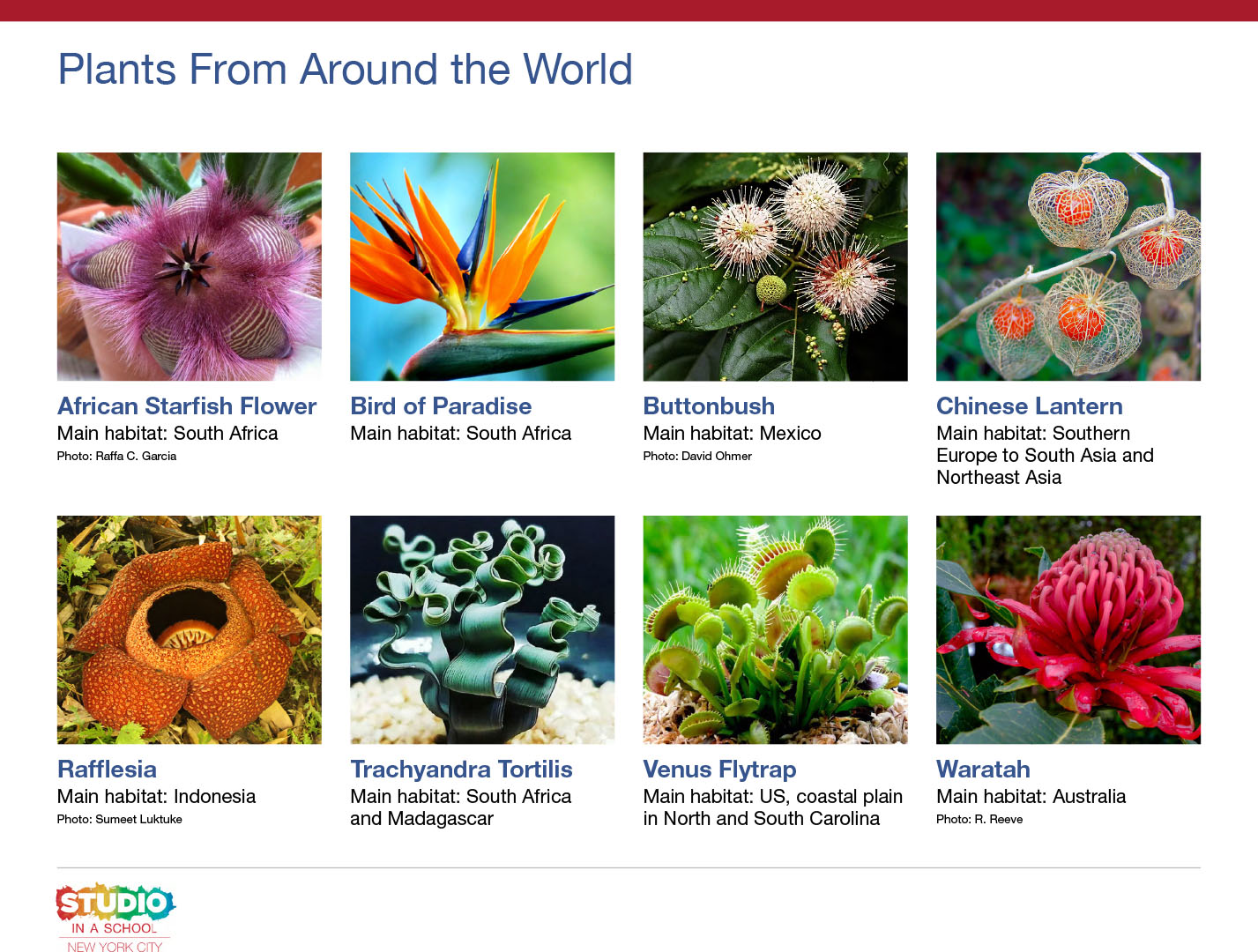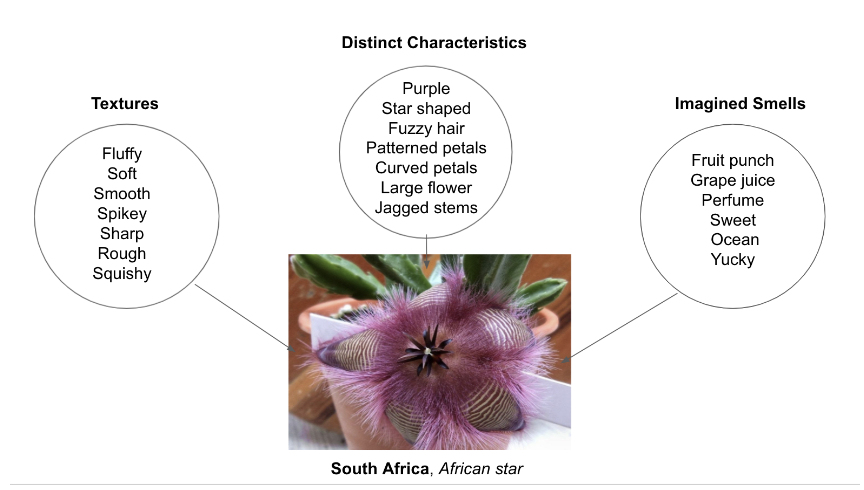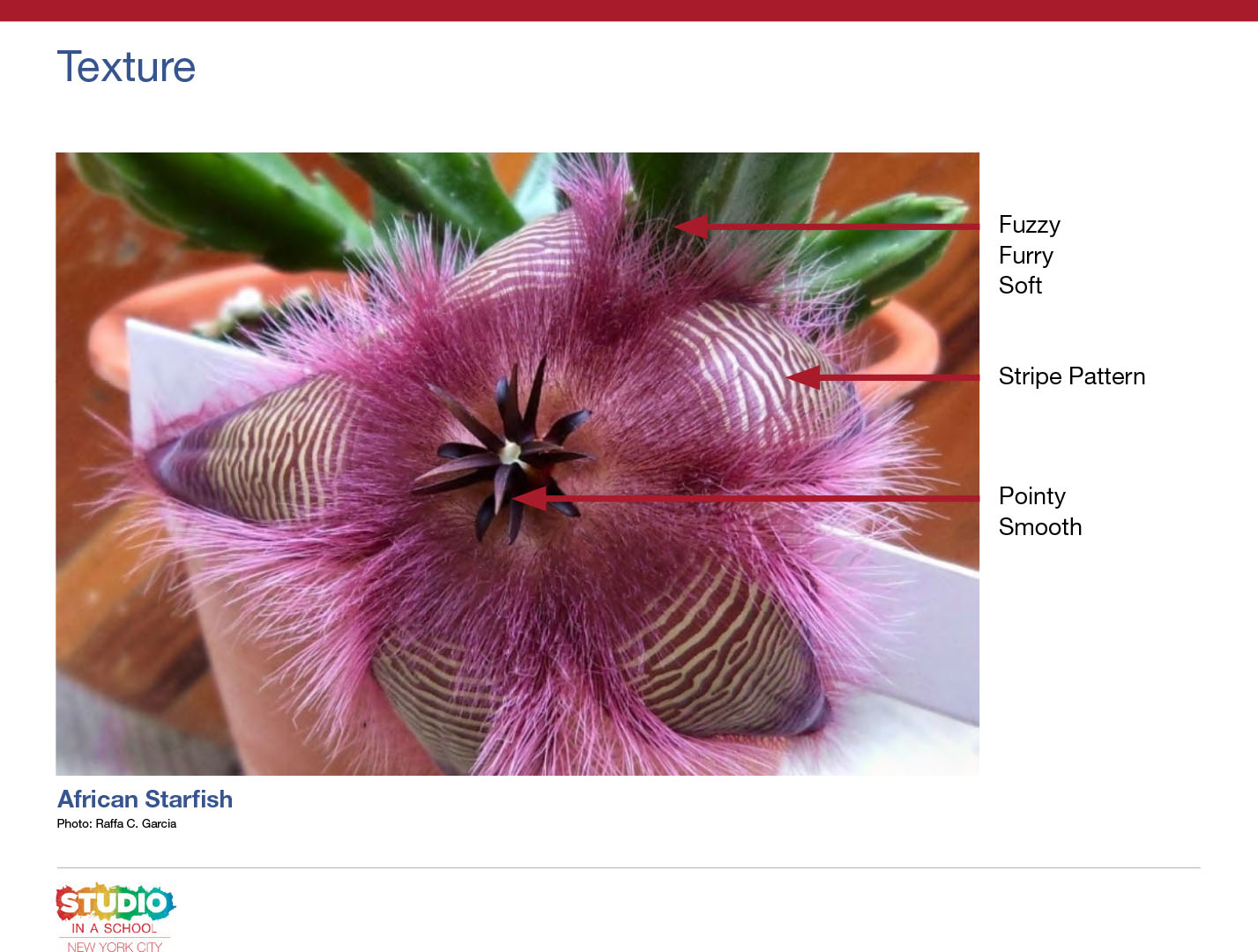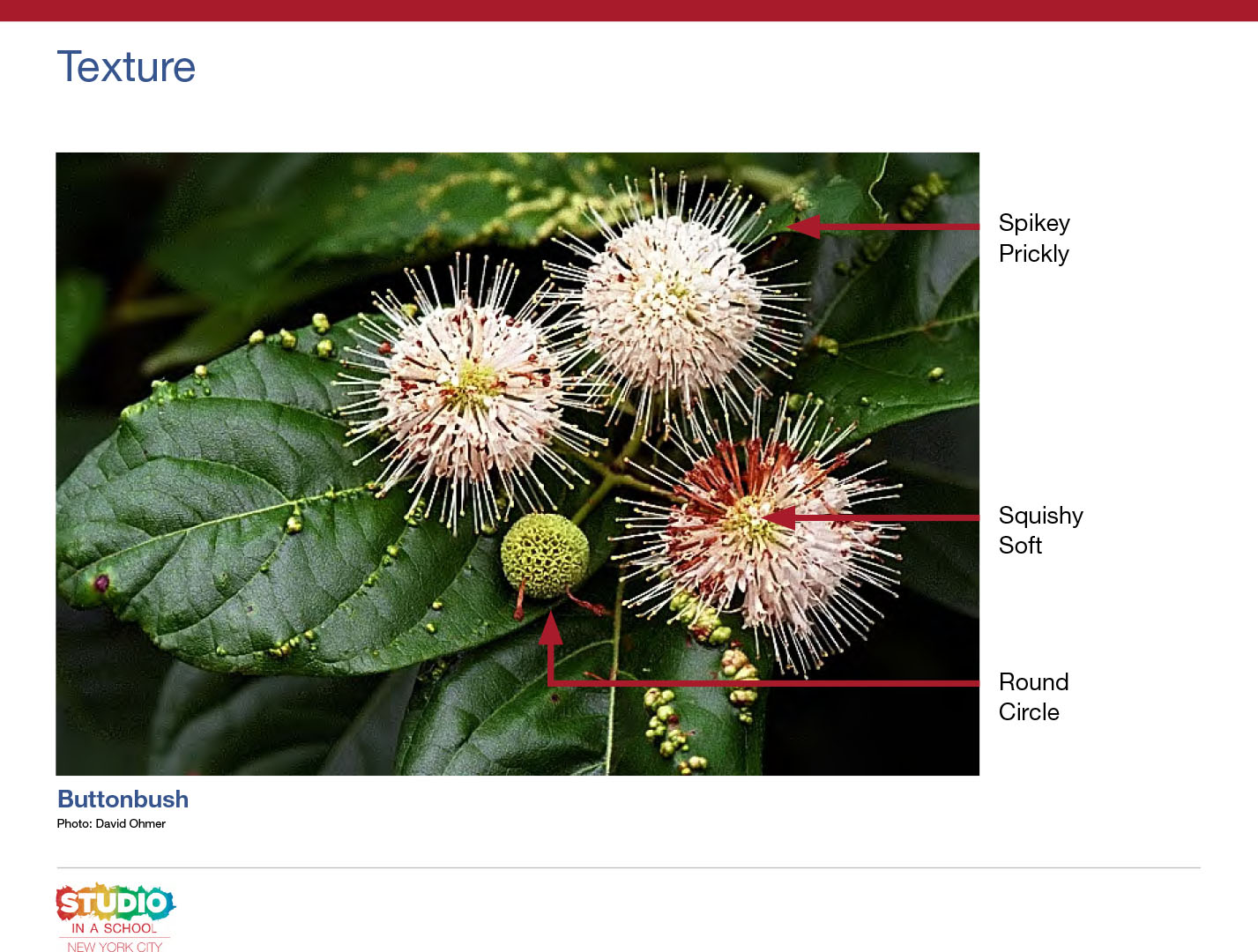Overview
Students will prepare for upcoming artmaking lessons using close-looking, speaking, writing, and/or sketchbook prompts.
Materials and Tools
- Pencil
- Sketchbook or 1 piece of paper
- Student slides #5 – 10
Activities
Note: The following activities are written with sample language you may use with your students. Following the art-making lesson, you may choose as many reflection activities as desired for students to work on in class or independently.
Explain to students that the slides they see during the lesson will be shared with them so they may review the lesson on their own and continue to make more art.
Step 1: Introduction and Discussion (5 minutes)
Hello Artists! Today we are going to brainstorm and plan our drawings of imaginary plants!
Let’s look at our plants from around the world on student slides #5 – 10.
Choose a plant photo that is different from the one you drew in the previous lesson.

Photos of Plants From Around the World
- What distinctive features do you notice?
- Why do you imagine the plant has this feature?
- What could the plant use this feature for?
For example, the Golf Ball plant from Mexico has spikes to help protect itself so animals can’t eat it.
Optional:
Create a graphic organizer of student responses to use as a visual support in the classroom. Students can use this descriptive vocabulary to speak and write about their artwork.
Graphic organizer example:

Step 2: Sketchbook Activity (10-15 minutes)
One way to imagine a new plant is to combine the distinctive features of different plants. Choose two photos of plants from around the world that inspire you. You can combine the distinctive features of both plants to invent something new. This new plant is called a hybrid plant!

Using the same two plant photos, try out different combinations and ideas in your sketchbook. Make 2-3 drawings of hybrid plants.
Model choosing two plants to combine, describing the features that you are interested in combining and why. Model using both photos as reference to identify and draw the features of each.
Step 3: Writing Activity (10 minutes)
Now we are going to write about one of your hybrid plants. Look at the drawings of hybrid plants that you drew in your sketchbook. Choose your favorite and answer these questions.
- What distinctive features from each plant did you draw to create a hybrid plant?
- What do you imagine your hybrid plant does?
Based on your students’ writing skills, choose from the options below.
Option 1: Write sentences to answer 4-5 of the questions above.
For example:
- I drew the spiky oval from the Venus flytrap and the curving shapes of the ribbon plant.
- I imagine my plant can uncurl its long leaves to reach out and bite something!
Option 2: Use the sentence frames and vocabulary list below to write about your artwork.
I combined ___________ and ___________ to make my plant.
My plant can _____________________________________.
Option 3: Label the different parts of your plant and write a few words about what your plant can do.
Resources

Texture chart of African Starfish



